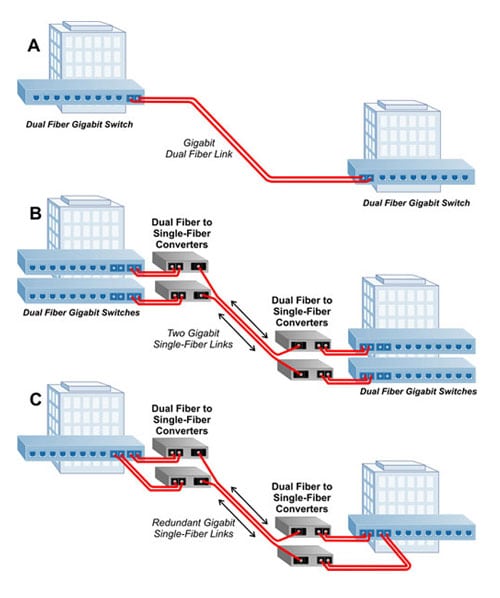Double Fiber Capacity with Dual Fiber to Single-Fiber Conversion
Dual fiber can be converted to single-fiber as a technique to double the capacity of the existing dual fiber infrastructure. Dual fiber uses the same wavelength over two different strands of fiber; with one strand as transmit (Tx) and other strand as receive (Rx). Single-fiber is single-mode and operates with bi-directional wavelengths, often referred to as Bi-Directional, or BIDI. Typically BIDI single-fiber uses 1310nm and 1550nm wavelengths over the same fiber strand in opposite directions.

In example A, a dual fiber link connects two switches in different buildings.
In example B, new switches are added to each location, and fiber-to-fiber media converters double the capacity of the dual fiber link by converting each strand of the dual fiber to a BIDI single-fiber link.
In example C, fiber-to-fiber media converters double the capacity of the dual fiber link by converting each strand of the dual fiber to a BIDI single-fiber link, providing redundancy protection between the two switches.
Learn more about iConverter Fiber-to-Fiber Media Converters
Learn more about FlexPoint Unmanaged Fiber-to-Fiber Media Converters











